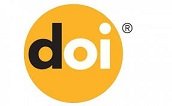Effectiveness of Design-based Learning in Enhancing Scientific Creativity in STEM Education: A Meta-analysis
292
147
Abstract
This meta-analysis examined 12 empirical studies, published from 2013 to 2023, to determine the effectiveness of DBL in enhancing scientific creativity. The sample size involved 1211 students. Based on the analysis using random-effect model, DBL has a positive and strong significant effect (ES=1.181) to scientific creativity. Moderator analysis uncovered significant difference in the effect sizes when clustered according to the academic level and geographic location, while the STEM discipline and the implementation period demonstrated otherwise. It is further revealed that engineering design (g=1.546) registered the largest effect size in comparison with design thinking (g=0.896) and STEAM design (g=0.696) models. Moreover, originality, elaboration, fluency, and flexibility are the most frequently used dimensions in assessing scientific creativity. In conclusion, the findings established the effectiveness of DBL in enhancing scientific creativity among STEM students. Hence, teachers must be equipped of the technical know-how of integrating design process in teaching STEM subjects.
Keywords
Design-based learning, Design thinking, Engineering design, Scientific creativity, STEAM design
Full Text:
PDFReferences
Panergayo, A.A.E. & Prudente, M.S. (2024). Effectiveness of design-based learning in enhancing scientific creativity in STEM education: A meta-analysis. International Journal of Education in Mathematics, Science, and Technology (IJEMST), 12(5), 1182-1196. https://doi.org/10.46328/ijemst.4306
DOI: https://doi.org/10.46328/ijemst.4306
Refbacks
- There are currently no refbacks.
Copyright (c) 2024 International Journal of Education in Mathematics, Science and Technology







International Journal of Education in Mathematics, Science and Technology (IJEMST)

This work is licensed under a Creative Commons Attribution-NonCommercial-ShareAlike 4.0 International License.
ISSN: 2147-611X (Online)
